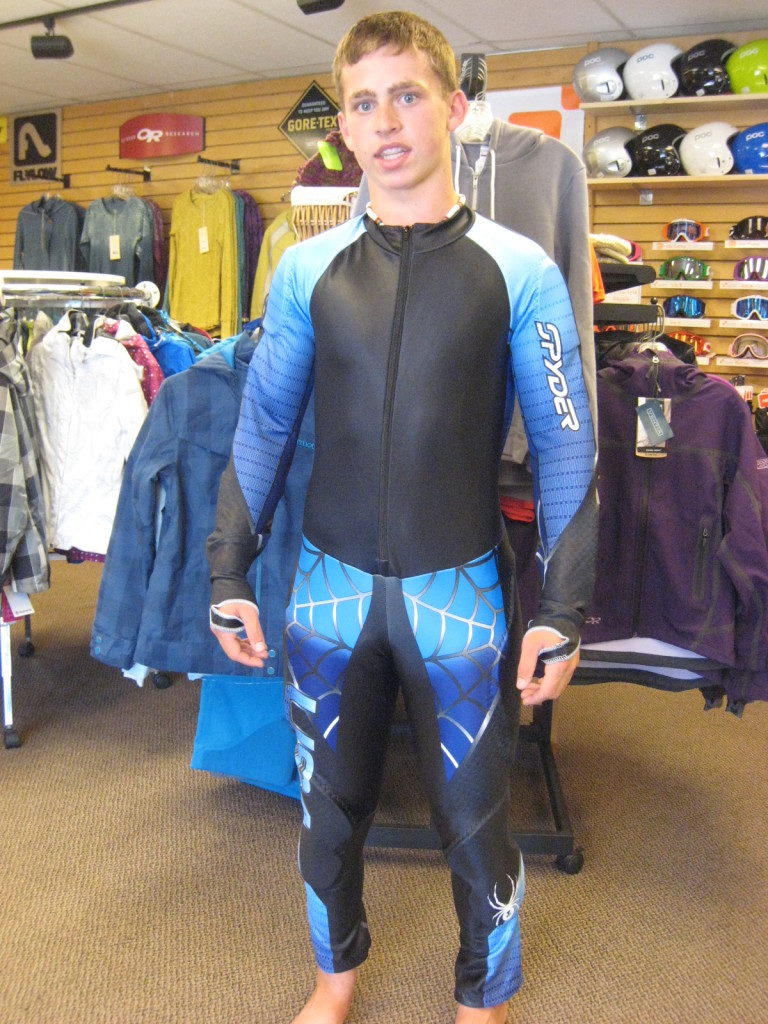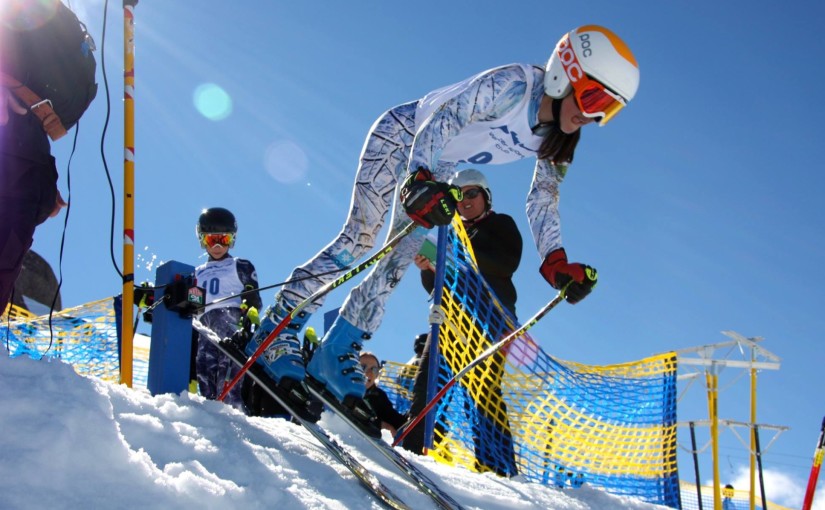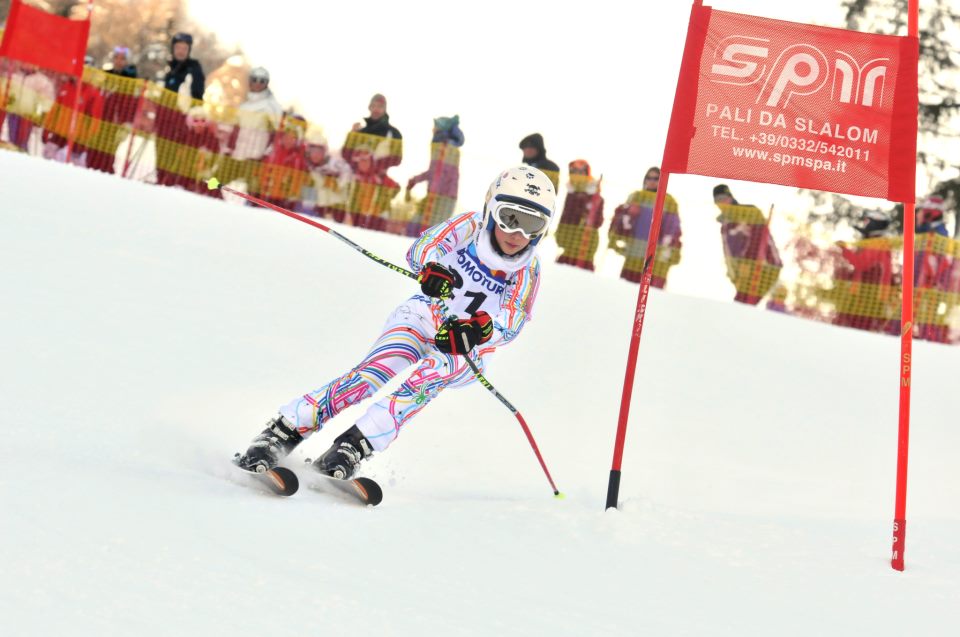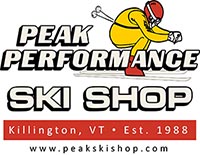Why do ski racers wear a ski race suit?
Ski race suits are often called speed suits or GS suits. The purpose of the ski race suit is part clothing, part equipment. The ski racer wears a race suit instead of multiple layers of clothing and a jacket and pants. The ski race suit provides protection from the elements and performance enhancement. A properly fitting ski race suit allows for the wide range of unrestricted movement that is necessary for the dynamics of ski racing. Ski race suits allow the ski racer to be more aerodynamic, which makes them ski faster.
There are two types of suits for ski racing: DH suits and GS suits.
DH suits are worn for racing the speed events of Downhill and Super G. They are not padded, so they have more stretch and can be worn tighter to be more aerodynamic. Because they have more stretch, they tend to fit a wider range of body shapes and sizes. A DH race suit can be worn for SL and GS racing as well, the racer would just need to wear separate body armor for protection.
GS Suits are for racing the tech events of Slalom and Giant Slalom. These suits are padded, and because of the way the pockets that hold the padding is sewn in the suit is less stretchy than a DH suit. The padding in a GS race suit offers additional protection from impact with ski racing gates. The padding in most higher quality GS suits is also removable. In order for the padding to offer the proper protection, the suit needs to fit properly. If the ski race suit is too big or too small and the pads do not line up to cover the areas of the body they are intended to cover, they will not provide the proper protection.

Both types of ski race suits are made from the same type of fabric: an (approximately) 80% Polyester, 20% Spandex blend. The performance level of the suit is determined by the porosity of the fabric or aerodynamic porosity. The aerodynamic porosity of the fabric used in a FIS certified ski race suit is lower than ski race suits used by younger, lower level racers. This means less air penetrates through the suit making it more aerodynamic. These more aerodynamic FIS certified ski race suits are also more expensive than the race suits made from higher aerodynamic porosity fabrics.
There are several manufacturer’s that make ski race suits. Here is a list of the more popular brands:
For more information on the history of ski race suits, read the Ski Racing Magazine article: Fast and Curious: Once and Oddity, speed suits have become an essential piece of racing equipment.
At Peak Performance Ski Shop we carry the largest selection of ski race suits in Vermont and offer racer pricing every day of the year.



